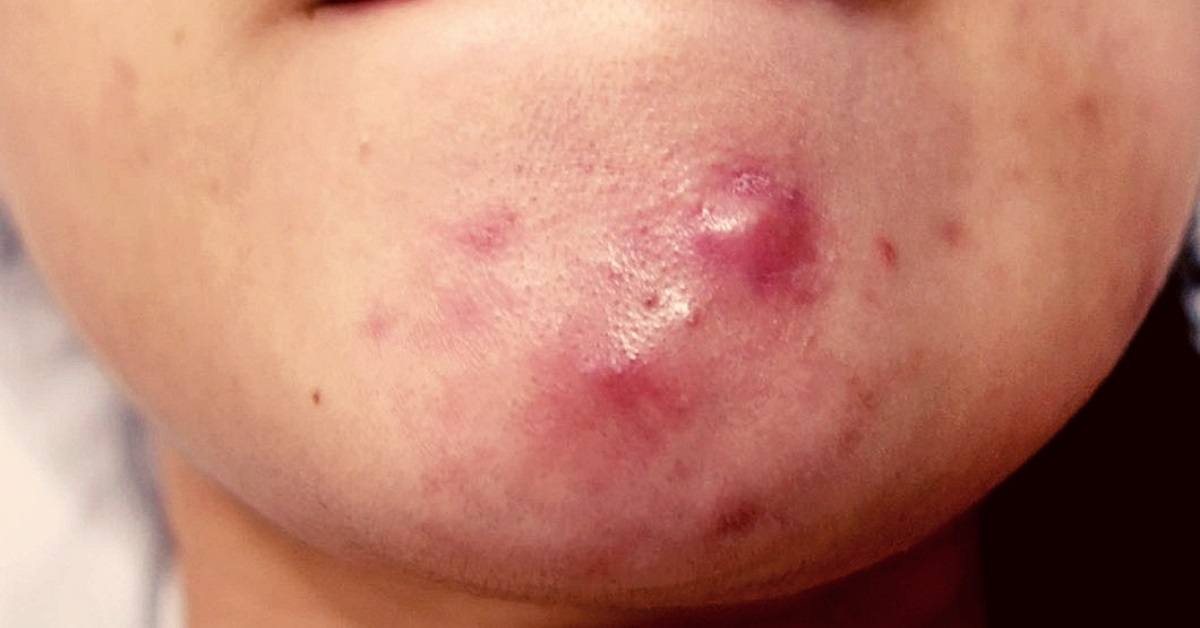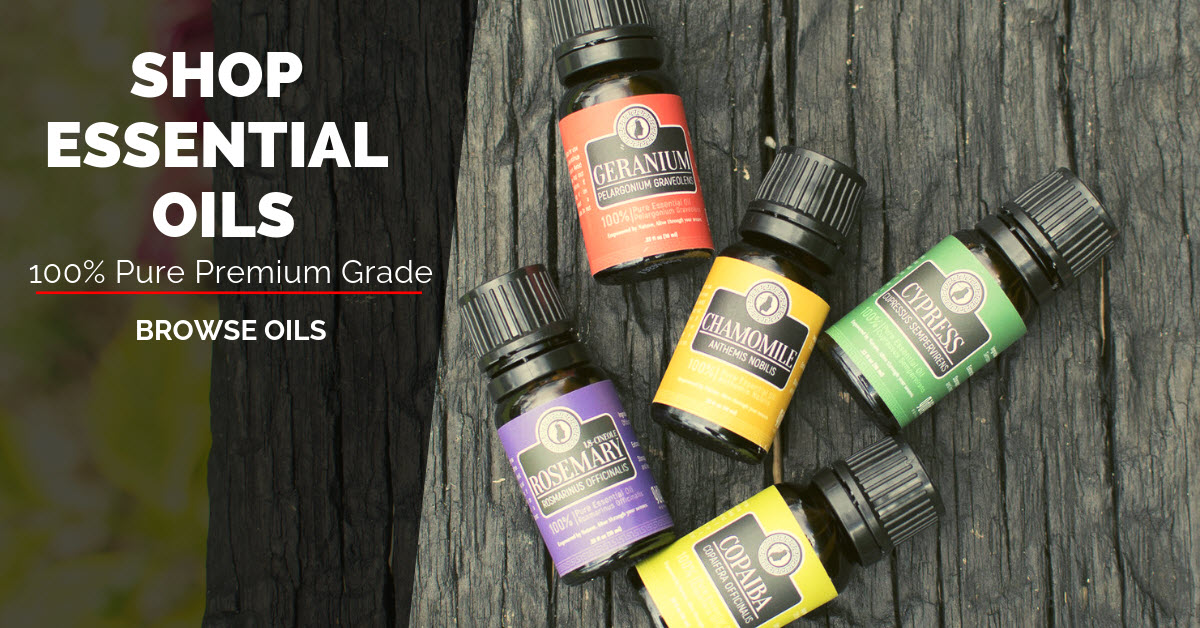It’s natural to break out in pimples. An outbreak hinges on your age, diet, lineage, hormonal changes, environment, stress level, and even the cosmetics you use. It’s almost impossible to avoid acne, but you can prevent them from becoming infected.
If an outbreak becomes infected and digs deep into the dermis, cystic acnes will emerge. This may be evident through inflamed and painful bumps. They may also show a hue of redness and often consist of pus. Some cystic acne may cause itching. If a cyst is allowed to burst, the infection may spread and cause an even greater outbreak.
Why Essential Oils Are Good For Cystic Acne
Benzoyl peroxide, salicylic acid, and keratolytic soaps are known conventional acne treatment regiments. These, although producing a positive effect on acne outbreaks, are not without side effects. The science behind how these substances really work is also not known.
However, several observations made using essential oils for acne treatment shows how different compounds of selective oils work on acne. For example: The main constituent of tea tree oil, Terpinen-4, creates an antimicrobial action that works against the bacteria that causes acne. To supplement, once used in appropriate dilution, side effects from essential oils are low, in comparison to conventional acne treatment.
Best Essential Oils For Cystic Acne
1. Mandarin Essential Oil (Citrus reticulata)
The antioxidant property of mandarin makes it an effective agent in treating acne and reducing inflammation. They also act as a barrier, protecting your skin from toxins that could penetrate the dermis and cause outbreaks.
To use this tangy, sweet oil to keep your acne situation regulated, combine 2 drops in a teaspoon of base oil. Use your index finger to massage the oil blend on to the afflicted area in a circular motion.
Best for: keeping acne under control
2. Patchouli Essential Oil (Pogostemon cablin)
The sebaceous glands produce sebum, the oily substance that keeps your skin moisturised and healthy. When present in excess, however, sebum creates a build-up. This build-up, along with dead skin cells, contribute to acne development. Constituents of patchouli act as an antioxidant that may create an astringent-like effect. This may be used to regulate and control sebum production.
To influence how much of this oily substance is produced, add 2 drops of patchouli in a teaspoon of witch hazel. Apply to the face using cotton balls.
Best for: regulating and balancing sebum secretion
3. Lemongrass Essential Oil (Cymbopogon citratus)
Lemongrass is a cooling extract that can be used for its antiseptic constituents. The oil behaves similar to an astringent, cleansing the skin and unclogging blocked pores. By allowing your pores to breathe, you’d prevent pimples from developing, which may later become infected and turn into cystic acne.
Use lemongrass as a facial steam to encourage the free flow of sebum and dead skin cells through pores. Add 8 drops of the lemon-scented extract to a bowl of just-boiled water. Place your face above the container, and using a towel to contain the steam, allow the vapor to penetrate your pores.
Best for: blocked pores
4. Clove Bud Essential Oil (Syzygium aromaticum)
Cystic acne is infamous for causing red, tender, and pus-filled bumps. The constituents of clove bud produce an effect that works to combat inflammation. Clove bud also contains analgesic properties, which may reduce pain felt once cystic acnes emerge.
To reduce swelling, redness, and pain, add 6 drops of clove to 30 ml of jojoba oil and massage the affected area. Ideally, this oil blend should be used on the body where cystic acnes are present.
Best for: painful and inflamed cystic acne on the body
5. Thyme Essential Oil (Thymus Vulgaris)
Thyme is an effective agent against the bacteria that cause acne – Propionibacterium acnes (P. acnes). Ten essential oils were observed for the activities they produced against the aforementioned bacterium. Of the plant-based extracts used, Thyme was among the three oils that “exhibited the strongest antibacterial activities” toward the microorganism.
Thyme may be used as a skin toner to prevent the bacteria that cause acne from getting trapped in your pores. To start, mix 4 drops of thyme in 2 tablespoons of aloe vera gel. Use a cotton bud to apply to affected areas of the face.
Best for: killing the bacterium that causes acne
6. Cinnamon Leaf Essential Oil (Cinnamomum zeylanicum)
Like thyme, cinnamon leaf wields a strong effect against the bacteria that contributes to the formation of cystic acnes. This warming antiseptic soothes the skin and leaves it fortified against nasty microorganisms.
To use, add 3 drops in a tablespoon of base oil and massage onto the affected area.
Best for: using on the entire body to cleanse the skin against bacteria.
7. Tea Tree Essential Oil (Melaleuca alternifolia)
If you opt to bypass antibiotics to treat cystic acne, that may not be such a bad thing. Tea tree is a worthy alternative. Clinical studies have revealed that the strong microbial agent of the oil not only reduce acne lesions, but work against the bacteria that cause acne.
A comparative study of tea tree and benzoyl peroxide against acne also revealed the beauty of the oil. Both compounds had a strong effect on acne, but fewer side effects were seen when tea tree was administered. To use, add a drop of tea tree to a cotton bud and apply directly to the cyst. For sensitive skin, dilute 3 drops of tea tree with 15 ml of aloe vera gel.
Best for: cleansing the skin to prevent outbreaks
8. Niaouli Essential Oil (Melaleuca viridiflora)
Cystic acne can affect a significant portion of your skin, leaving scars and spots in its wake. Niaouli can be considered as a milder, gentler version of tea tree with all the magnificent skin benefits. As the oil promotes regeneration of skin tissues, it may be used to minimize scar and spot appearances caused of cystic acne.
To reduce scar appearances, combine 4 drops of niaouli in a tablespoon of avocado base oil and apply to affected areas.
Best for: scar reduction
9. Bergamot Essential Oil (Citrus aurantium bergamia)
While bergamot contains natural healing properties that may minimize scars with time, it also has an effect on how you view yourself. Cystic acne is the ultimate confidence killer. What’s worse, it can turn you into a recluse, isolating you from interacting with others. Acne affects your self-esteem, and bergamot is here to bring that back.
Bergamot lifts your spirit, and helps you to accept your true self; it promotes self-love and self-acceptance. To start improving your wellbeing, diffuse bergamot whenever your cystic acne weighs you down. Add 3 drops of the confidence-boosting oil to your diffuser and let self-love resonate throughout your heart.
Best for: boosting confidence, self-love, and self-acceptance
10. Rose Essential Oil (Rosa centifolia)
Rose as a medicinal extract is used to eliminate microorganisms, like Propionibacterium acnes, that may carry bacteria on to the skin. The antibacterial effect rose has may just be the break you need from acne.
Use rose as a skin toner by adding 2 tablespoons of witch hazel with 4 drops of rose. A bonus is to add 60 ml of rose flower water to the mixture. Add the contents to a spray bottle when ready to use. Apply with cotton buds or pads.
Best for: reducing the spread of acne-causing bacteria
11. Jasmine Essential Oil (Jasminum officinale)
Research suggests that the extract produces an antiacne effect against the bacteria that causes acne. Jasmine is also a natural tonic. It tones the skin, leaving it looking and feeling rejuvenated and refreshed. While it works to counter the P.acnes bacteria, it aids in the reduction of acne scarring.
Use as a toning massage oil all over the body where cystic acne concentrates to minimize the appearance of scars. In a teaspoon of coconut base oil, add 4 drops of jasmine. Mix the oils together and apply using the palms.
Best for: scar reduction
12. Helichrysum Essential Oil (Helichrysum italicum)
Helichrysum is also a beautiful extract to use for skin conditions. Like jasmine, the oil helps to heal scars. Helichrysum is also reputable for its antimicrobial impact when applied to the skin. This makes it a wonderful skin protectant. It not only aids in the healing process, but it reduces cystic acne swelling and pain.
Use as a skin toner by adding 10 drops of helichrysum in a tablespoon of witch hazel. Apply to the skin to offer protection and healing against cystic acne.
Best for: skin protection and healing
3 Best Essential Oils For Cystic Acne Recipes
Facial Spritzer Blend For Acne And Blemish Control
To prevent and control the outbreak of acne, a facial spritzer with the right blend of essential oils is a must have. This blend is also equipped with extracts that work against the bacteria that cause acne outbreaks and prevent infection. To create this facial spritzer, you’ll need:
- 2 drops thyme
- 2 drops mandarin
- 2 drops lavender
- 90 ml witch hazel
- 30 ml aloe vera juice
In a container, combine the recommended essential oils.
Add the witch hazel and aloe vera juice to the oil blend.
Transfer the blend into an oil sprayer and use to spritz the face.
If there are no oil sprayers (or spritzer bottles) at your disposal, consider using cotton balls to apply this facial spritzer blend to the face.
Tea Tree And Jasmine Facial Sauna For Cystic Acne
This facial sauna blend helps to control acne outbreaks. It also soothes inflammation and pain. Since stress can cause cystic acne to spiral out of control, this sauna will help to create a relaxed you. Properties of the extracts used also tone and clean the skin to prevent further infection.
To make a single facial sauna, you’ll need:
- 2 drops lemongrass
- 1 drop helichrysum
- 3 drops jasmine
- 2 drops tea tree
Add the essential oils to a bowl with hot water.
Position your head above the bowl and let the steam unblock those clogged pores to create breathing room for your skin.
To retain heat during a facial sauna, you may need to cover your head with a towel to form a tent above the bowl.
Allow your face to steam for about 5 minutes.
After your facial sauna, use cool water to wash and dry with a clean, soft towel.
Regenerative Facial Scrub To Exfoliate And Cleanse
The oils within this facial scrub blend has long being used to exfoliate and tone the skin. The addition of argan oil restores the skin, while avocado oil fatty acids give it a polished and refined look. To make this scrub, you’ll need:
- 1 tablespoon argan oil
- 1 tablespoon avocado oil
- 1 drop rose
- 1 teaspoon ground rice
- 1 teaspoon kaolin clay
- 1 drop cinnamon
Combine the ground rice, kaolin clay, and base oils (avocado and argan) to make a paste. If the paste is dry, thick, or difficult to work with, add a bit more of the base oils. If it gets too wet, be generous with the kaolin clay.
Add your essential oils to the mixture. Apply to the face immediately.
Do not allow the scrub to get into the eyes. Wash with warm water when done.
To Summarize
- Cystic acne occurs when a common acne situation becomes infected and spreads deep into the skin. It is commonly seen through red, swollen pimples that are often painful and itchy.
- In comparison to conventional acne treatment, essential oils have fewer side effects and how the extracts work against acne is transparent.
- Essential oils such as mandarin, patchouli, lemongrass, clove bud, thyme, niaouli, bergamot, and tea tree are great options for cystic acne.
- The right blends of essential oils may have a powerful effect on cysts caused by acne. They will work to regulate how sebum is produced in the skin, soothe inflammation, clean bacteria, minimize scars, and get rid of pimples.
Read more:


